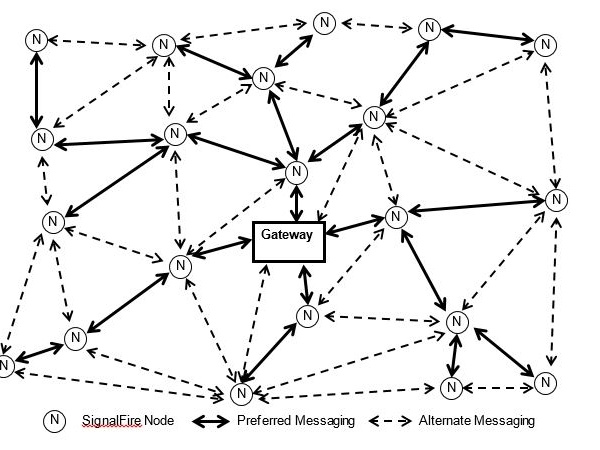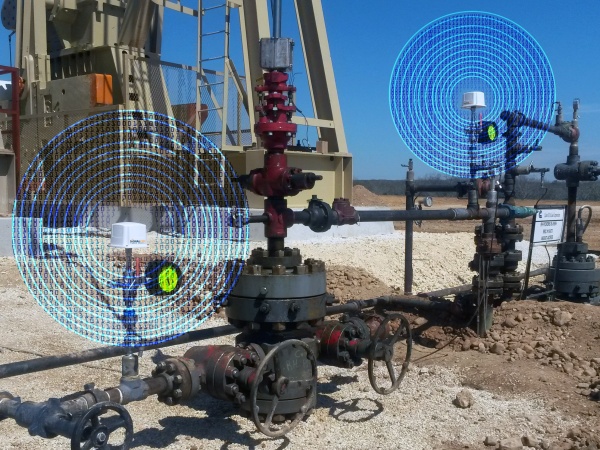SignalFire Mesh Wireless Networks Address the Challenges of Outdoor Monitoring Applications

In outdoor applications that monitor assets such as tank levels, pump status, and water quality, one thing you can be sure – you do not have control over the location of wireless nodes or what might be between each node and the gateway. Having a robust mesh capability can greatly help with this problem. The unique network also enables clever monitoring schemes once you understand its capabilities.
While noted in the upstream gas and oil market for our remote sensor control systems, SignalFire’s first foray into outdoor telemetry was streetlight monitoring. Initially, we developed a unique radio technology that allowed small amounts of data to be collected from tens of thousands of nodes spread over a wide area. Think about it. The technology featured a low-cost radio (short-range) working in a network with a significant number of nodes. The saving grace was that the amount of data coming from each node (or a streetlight) was small. The streetlight monitoring system required only a few bytes of data per day! However, routing algorithms were an issue as there was no technology capable of such a vast network. A robust mesh network was required to move data within a citywide system.
At the time, no mesh radio technologies existed that could do this job. SignalFire developed the meshing algorithms enabling distributed routing capabilities. This technique is in our radios today.
In outdoor applications that monitor assets such as tank levels, pump status, and water quality, one thing you can be sure – you do not have control over the location of wireless nodes or what might be between each node and the gateway. Having a robust mesh capability can greatly help with this problem. The unique network also enables clever monitoring schemes once you understand its capabilities.
SignalFire’s unique two-way mesh technology provides the power and stability needed for reliable data transfer. We couple an innovative message-forwarding architecture with low-cost, high-power ISM-band radios, creating a simple, affordable system that’s easy to deploy. Our mesh-based technology is ideal for applications calling for many assets widely dispersed (up to 3 miles point-to-point); transfer of simple data in small volumes; and occasional rather than real-time reporting frequency. This system’s use of long range radios solves the problem other wireless networks have with hills and buildings causing obstructions.
For example, in monitoring outside assets such as oil wells spread out over several square miles, it is unlikely that all wireless nodes at each well will be able to reach a central gateway. As many of SignalFire’s hazardous location nodes are battery-powered and rated as intrinsically-safe, high-power radios not possible. Placing a high-power, long-range node (say, for remote shutdown, which is a required function) at each well resolves this problem. These nodes have high-powered radios as they are not in the explosive zone. The low-powered nodes that are in the hazardous area will (automatically without configuration) connect to the gateway through the long-range shutdown node mesh. This network configuration is a very robust and an easy-to-deploy solution.
SignalFire developed its mesh radio technology for exactly the type of data transfer experienced in many outdoor monitoring and control applications. A mixture of long-range and short-range nodes is available in this network. In meeting different power requirements, Signal Fire offers battery and solar-powered (class 1 div 1) nodes as well as line-powered (6-36 VDC) ones. Using a narrow-band, low data rate, long-range and fully acknowledged protocol, users have many options when designing a wireless sensor/actuator SCADA system.
To find out more about how Self-Configuring Mesh Network Automatically Adapts to Network Changes in Tank Level Monitoring Application, click here.
0 Comments
Leave a reply
You must be logged in to post a comment.






